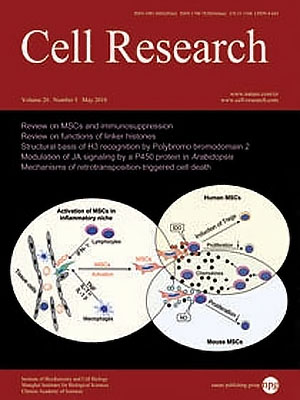
Volume 20, No 5, May 2010
ISSN: 1001-0602
EISSN: 1748-7838 2018
impact factor 17.848*
(Clarivate Analytics, 2019)
Volume 20 Issue 5, May 2010: 519-528
REVIEWS
Multifunctionality of the linker histones: an emerging role for protein-protein interactions
Steven J McBryant1, Xu Lu2 and Jeffrey C Hansen1
1Department of Biochemistry and Molecular Biology, Colorado State University, Fort Collins, CO 80523, USA
2Van Andel Institute, Grand Rapids, MI 49503, USA
Correspondence: Steven J McBryant, Jeffrey C Hansen,(Steven.Mcbryant@colostate.edu; Jeffrey.c.hansen@colostate.edu)
Linker histones, e.g., H1, are best known for their ability to bind to nucleosomes and stabilize both nucleosome structure and condensed higher-order chromatin structures. However, over the years many investigators have reported specific interactions between linker histones and proteins involved in important cellular processes. The purpose of this review is to highlight evidence indicating an important alternative mode of action for H1, namely protein-protein interactions. We first review key aspects of the traditional view of linker histone action, including the importance of the H1 C-terminal domain. We then discuss the current state of knowledge of linker histone interactions with other proteins, and, where possible, highlight the mechanism of linker histone-mediated protein-protein interactions. Taken together, the data suggest a combinatorial role for the linker histones, functioning both as primary chromatin architectural proteins and simultaneously as recruitment hubs for proteins involved in accessing and modifying the chromatin fiber.
Linker histones, e.g., H1, are best known for their ability to bind to nucleosomes and stabilize both nucleosome structure and condensed higher-order chromatin structures. However, over the years many investigators have reported specific interactions betw
FULL TEXT | PDF
Browse 2042


